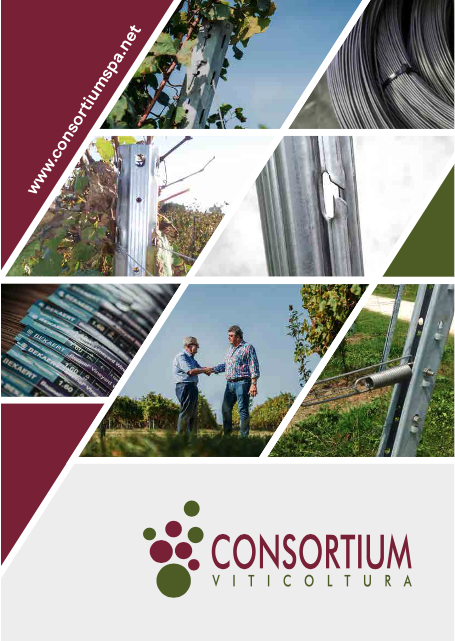GENERAL ASPECTS
This training form was developed in the 950s in the United States and involves 2 curtains of vegetation that hang parallel to the axis of the row and are supported by movable arms. Pruning is short with spurs of 1÷3 buds.
The advantages of this type of implantation are:
- Fair quantity/quality ratio
- Mechanization of all operations
- Very qualitative mechanical harvesting by vertical shaking
The needs and main issues of this form are:
- Need for fertile environments as the permanent stem must still take a long route with 2 bends
- High planting costs
- Long and laborious breeding phase
- Machine yard not usable for traditional rows of machines
- Difficulties of adaptability in varieties with acrotonous behavior
- Increased susceptibility to hailstorms, sunburn, and high winds
- Difficulty in harvesting due to vertical shaking of not perfectly ripe grapes (sparkling bases)
- Classic problems of spurs (quality of labor, fertility of some varieties, excessive willingness in the productive range, etc.).
It is a type of planting that may therefore be suitable for professional lowland viticulture in the central-north, with production goals of 150÷200 quintals per hectare, with medium-quality grapes and the need to minimize operating costs.
SIXTH OF PLANTING
Distance between rows
On average, it ranges from 3.80 m to 4.20 m
Distance on the row
With single vines, depending on varietal vigor of soil fertility ranges from 0.45 mt to 0.75 mt with cordons of 0.90 mt and 1.50 mt per vine, respectively.
MECHANIZATION
It is fully mechanizable in what concerns pruning (summer and winter), harvesting and suckering. Even combing, an absolutely necessary operation for proper management of the G.D.C., can now be greatly facilitated thanks to a system of wires attached to movable arms.
It is worth mentioning, as far as the structure is concerned, the validity of using stainless steel wire or wires with high-strength Zinc-Aluminum covering as an alternative to galvanized or Zinc-Aluminum spiraled wire. Stainless steel or high-strength Zinc-Aluminum, in fact, compared to spiral-coated, always remains in tension allowing better performance of all mechanical operations. They are also much less bulky and easier to distribute and plant.

